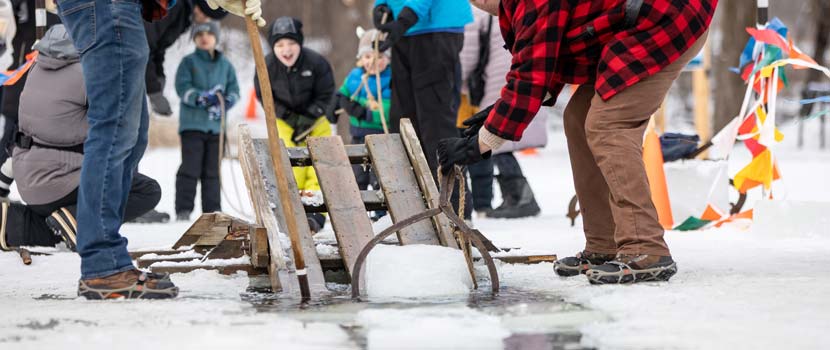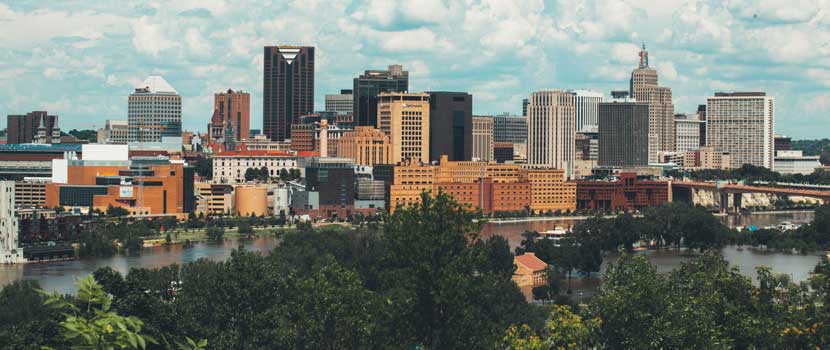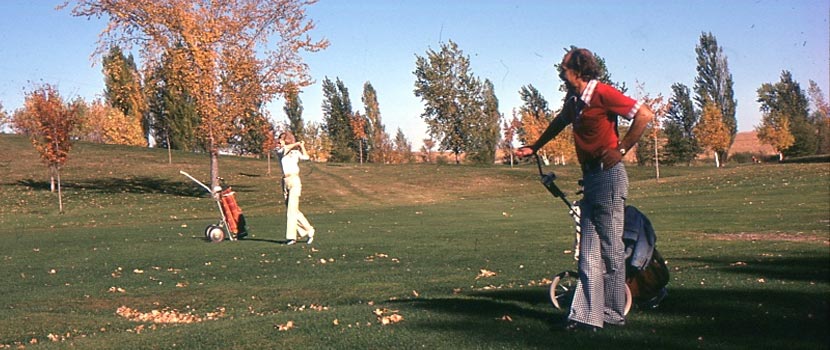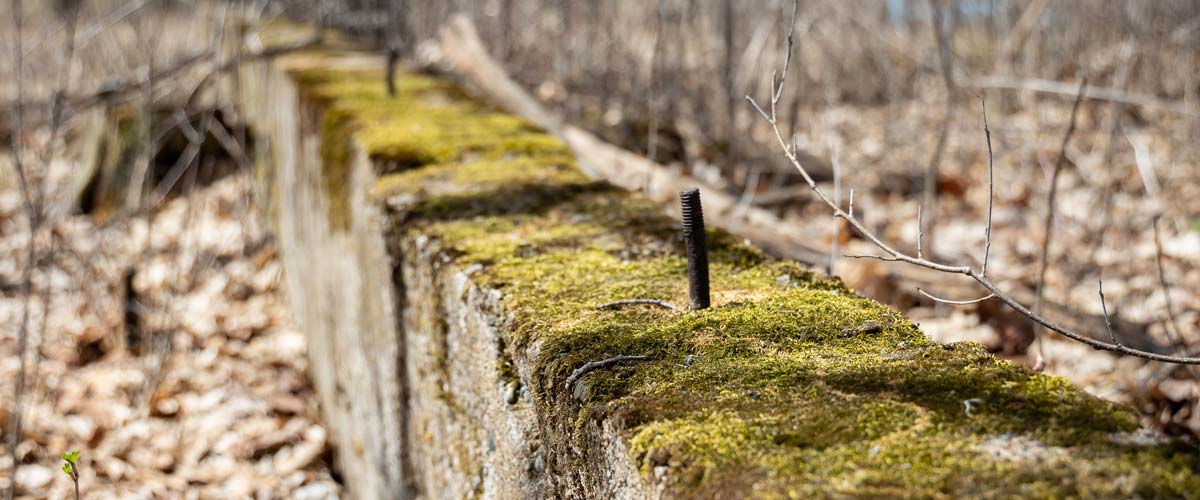
Hidden Houses: Remnants and Ruins at Spring Lake Regional Park
By: Andy Sima
August 15, 2023
Category: History
Every park has a story to tell. Some have signs or historic buildings. Others have ruins and unanswered questions, things left over from the people who lived there before. Whether it’s an educational sign installed recently or a soda can from the 1930s, these artifacts tell us something about history.
Compared to other popular Three Rivers parks like Hyland Lake Park Reserve or Elm Creek Park Reserve, Spring Lake Regional Park in Prior Lake is a lesser-traveled park. With a little over 350 acres, five miles of trails and an off-leash dog park, it offers opportunities for recreation in a quieter setting.
Even its history is lesser-traveled. There are almost no easily accessible historical documents about the land or the people who have lived on it. But for a park that feels untouched, it does have a surprising number of ruins. These remnants tell a part of the story of the land and make the park one of my personal favorites to explore.
Houses in Nature
When I first came to Spring Lake Regional Park, back in the fall of 2022, the trees were in full blazing color and the slight overcast to the day gave the perfect lighting. I was a brand-new historical interpreter, out to do my very own research for the first time.
Part of the research aspect of my job has been locating and documenting these ruins to better understand the history of our parks, so I was searching for ruins. These ruins aren’t marked on any map I know of, public or private. I noticed the locations of old farmhouses by looking at aerial photographs from the past and, curious, I walked out to where the houses used to be.
And, incredibly, I found them. One after another, I found old sites of habitation, places where people once lived and built their lives.
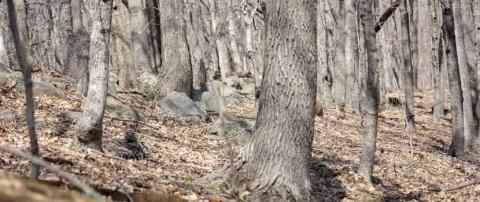
Houses in History
Spring Lake Park’s true history spans thousands of years, from the first indigenous peoples to the contemporary Shakopee Mdewakanton Sioux Community (SMSC) to 18th century fur traders. The story told by the ruined houses scattered through the park covers about a century and a half. Starting in the 1850s, Minnesota’s government began selling land across the state to European immigrants and Americans moving west. Most of these new arrivals turned the forests and prairies into lumber and fields, building farms across the state.
This was the case for the land that is within the boundaries of Spring Lake Park. The land was sold to prospective farmers, which was then bought, merged, shared, split and changed hands countless times over a hundred years. One of the first cabins, built by at least 1854, still stands in its original location just southeast of the park. It has been added onto and its log walls have been covered up, so now it just resembles a normal house.
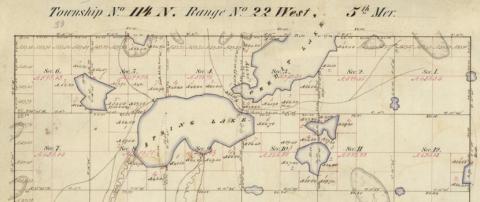
This shifting of property lines ended across the park in the late 1960s, when Scott County bought the land that would eventually become Spring Lake Regional Park. The people who had owned the farms moved away, but their houses remained. Some were demolished, but some were left to fall back into nature on their own. These are the ones I found on my search.
Houses in Motion
Each ruin or pieces of ruins offer their own unique takes on this brief history. In the northern half of the park, rotting wooden fence posts were intentionally left behind by forest managers to decay into the earth. Other objects have been left as artifacts: On one hill are scattered bottles, old tires and an abandoned deer hunting stand. In the middle of an oak restoration project, a cement foundation, 20 feet across, serves as a new microecosystem of mosses and lichens that typically only grow on exposed stone.
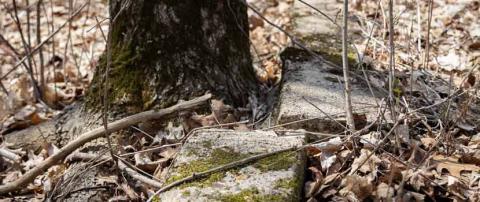
In another part of the park, Three Rivers and Scott County, along with support from the nearby Shakopee Mdewakanton Sioux Community, are working to restore the landscape to create the kinds of ecosystems that existed here prior to farming.
This project is based on a different kind of remnant: The reason they are planting oak trees, and not prairie grasses or maples, is because decades ago, while others around him cut down forests for farm fields, a man named Fred Arndt left up the oak forest on his property. Mr. Arndt wasn’t primarily a farmer, but rather the postmaster and general store manager for Prior Lake in the 1920s, ‘30s and ‘40s. According to local newspapers, he lived on a line between two voting districts and could change where he voted based on what bedroom he slept in.
Thanks to his livelihood, Mr. Arndt and his family left up those old oaks, some of which are still on the land today. That lack of development made for great conditions for the current oak restoration project.
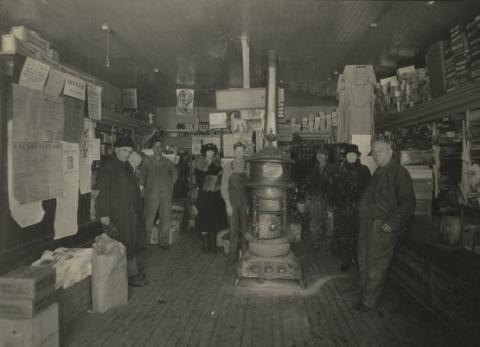
The very south end of the park, on the other side of Route 12, borders Spring Lake. This part of the park belonged to the Greenwald family for decades before the park existed. (Census documents and property maps make butchered attempts at spelling their name, with alternatives ranging anywhere from Greenwuld to Reenubl.)
No foundations remain in this part of their old property. The only distinguishable remnant I discovered was a mysterious hole, likely an old cistern. This relic is a cavity in the ground 3 feet wide and 3 feet deep with pipes sticking into it from odd angles.
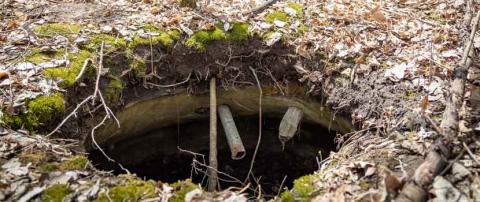
After finding these ruins in the woods, I stepped out of the forest and hit the lakeshore. This is my favorite part of the park.
Even though I knew that a maintenance team had been there recently, the lakeshore still felt distinctly abandoned compared to the rest of the park. It’s fenced off from nearby neighborhoods. The pavement is cracked and broken. The seasonal snowmobile trail that takes snowmobilers from Spring Lake across the marshes to Prior Lake grows over in the summertime. The color of the trees in fall, the sun off the lake, the sound of the wind blowing down the empty asphalt. Standing on the shore of a lake that’s almost entirely surrounded by modern homes, I was hit with a wave of beauty and loneliness.
But what also hit me was how perfect it all felt. I had done the research to find these places, to see these things that no one had noticed in decades. I did this under my own power, and it was an exhilarating experience, uncovering the mystery of this space. Standing down there, I might as well have been the only person left in the world. Just me and the hidden houses of people who had long since moved away.
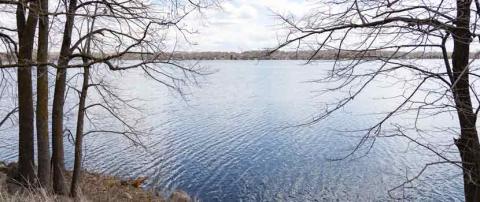
Houses in Time
That feeling of solitude is what makes the lakeshore of Spring Lake Regional Park special to me. There are clear signs that people once lived here, signs that haven’t yet been scrubbed away. Signs that I found. Living in the 21st century, it’s difficult to imagine what life was like all those decades ago. But it’s fun to try.
What makes it even more fascinating to me now is the way that landscape is still shifting. Just as these house remnants are only ghosts of themselves, changed forever, the park also continues to change. Scott County is currently developing new facilities on the lakeshore of Spring Lake Park. By 2024, Scott County hopes to have installed a new parking lot, hiking trails, an observation deck, a fishing pier and a kayak launch. This will be done along with buckthorn removal and pollinator plantings to improve the local ecosystems, much like the oak restoration to the north.
I am thrilled that these changes will make the lakeshore more friendly and accessible for all visitors, and will improve the health of the park. And part of me is a little bit sad to say goodbye to what felt like my own private lakeshore retreat.
Land is always changing, and the cistern or other ruins in Spring Lake Regional Park may disappear from view. But history is all around us, sometimes just barely into the woods. Even without interpretive signs, you can find it living in the park district. When we are gone, what we leave behind and the ways we keep, or change, our relics will continue to tell our story. Finding these stories out in the wild is a special joy, one that isn’t marked on any map.
As you explore our parks, please remember that collecting artifacts violates park district policy and, in some cases, violates federal law. Treat our history with respect and leave it for the next person to experience, too.
Curious to learn more about hidden history in the parks? Join our historical interpretation team for Hidden History tours throughout the year.
About the Author

Andy Sima worked as a historical interpreter at The Landing, before moving to Sweden to attend graduate school in Landscape Ecology. His favorite building at The Landing was the old wooden one. He previously worked as a seasonal naturalist at Baker Outdoor Learning Center and at Philmont Scout Ranch. He loves birds and hiking and writing and sometimes enjoys writing about hiking and birds. Sometimes he makes maps. His favorite bird is, currently, the barred owl.
Related Blog Posts
Learn about the 25-year history of Three Rivers’ ice harvest celebration and what this event can tell us about the climate.
A Tale of Twin Cities: Nature's Starring Role in the Founding of Minneapolis and St. Paul
By: Bill Walker
Did you know that nature is at the very heart of the story of how the Twin Cities came to be? Like this year’s spring floods, it all started with an extreme buildup of snow and ice. Learn about the series of events that led to the founding of Minneapolis and St. Paul.
The History of Finding Peace in the Parks
By: Mandy Wintheiser
For centuries, parks have provided people an outlet from the stress of daily life. Learn about the history of parks in the U.S., including Three Rivers Parks, as places for relaxation and leisure.
